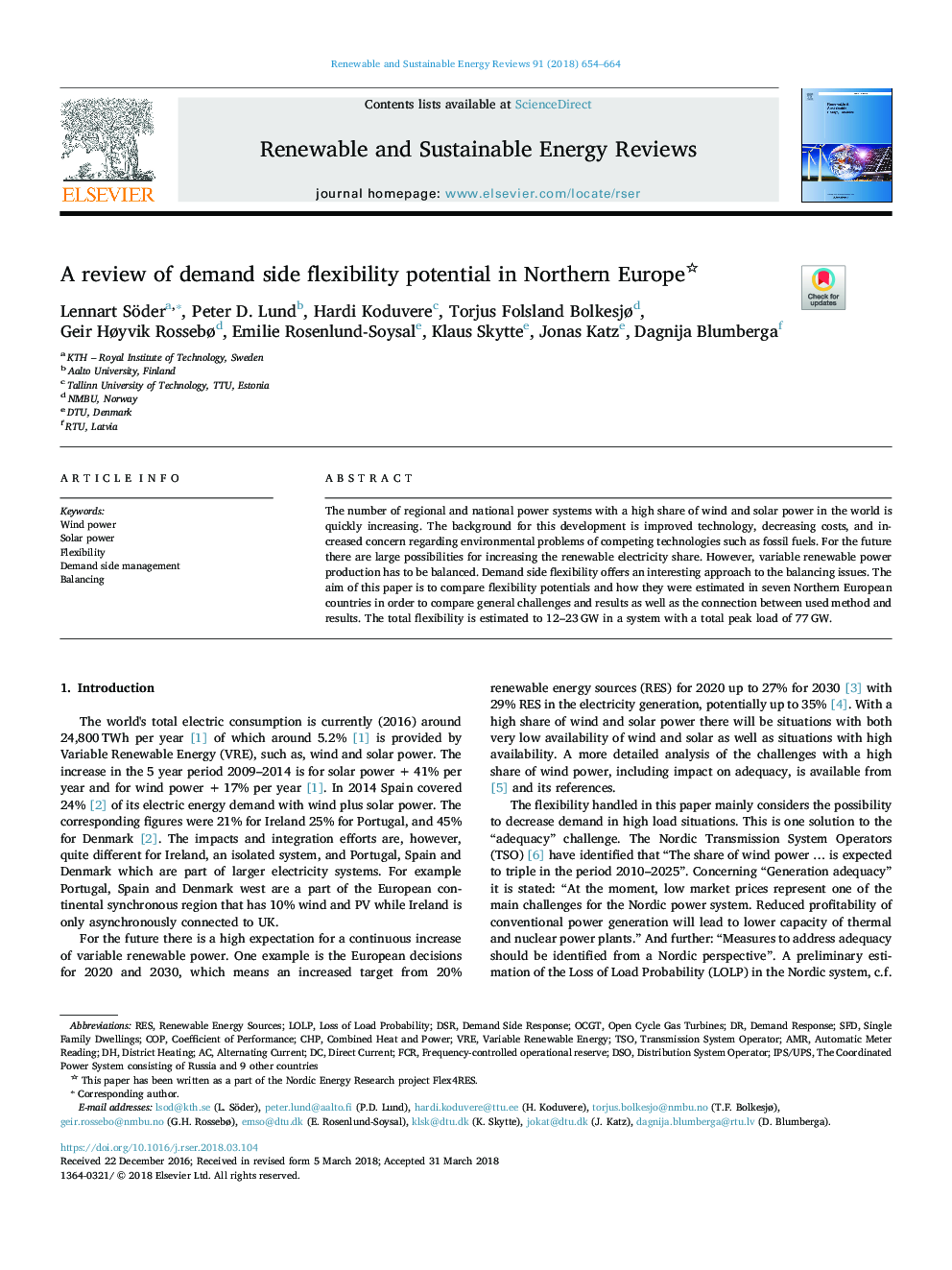| Article ID | Journal | Published Year | Pages | File Type |
|---|---|---|---|---|
| 8111155 | Renewable and Sustainable Energy Reviews | 2018 | 11 Pages |
Abstract
The number of regional and national power systems with a high share of wind and solar power in the world is quickly increasing. The background for this development is improved technology, decreasing costs, and increased concern regarding environmental problems of competing technologies such as fossil fuels. For the future there are large possibilities for increasing the renewable electricity share. However, variable renewable power production has to be balanced. Demand side flexibility offers an interesting approach to the balancing issues. The aim of this paper is to compare flexibility potentials and how they were estimated in seven Northern European countries in order to compare general challenges and results as well as the connection between used method and results. The total flexibility is estimated to 12-23â¯GW in a system with a total peak load of 77â¯GW.
Keywords
CHPOCGTSFDTSOVRERESFCRAMRDSRDSOCOPLoss of load probabilityWind powerFlexibilityTransmission system operatorDistribution system operatorCombined Heat and PowerbalancingAlternating currentDirect CurrentAutomatic meter readingLOLPcoefficient of performanceVariable renewable energyDemand side managementRenewable energy sourcesSolar powerDemand side responseDemand responseDistrict heating
Related Topics
Physical Sciences and Engineering
Energy
Renewable Energy, Sustainability and the Environment
Authors
Lennart Söder, Peter D. Lund, Hardi Koduvere, Torjus Folsland Bolkesjø, Geir Høyvik Rossebø, Emilie Rosenlund-Soysal, Klaus Skytte, Jonas Katz, Dagnija Blumberga,
